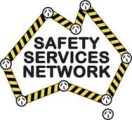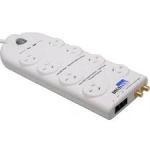Managing electrical equipment and installations
A business needs to ensure that:
- power circuits are protected by appropriately rated fuses or circuit breakers
- electrical leads are not arranged so that they are easily damaged, run across floors or doorways, or over sharp edges
- only leads and tools designed for wet or damp conditions are used in those conditions
- circuits where portable equipment may be connected are protected by RCDs
- if any current protective device (RCD or circuit breaker) is triggered, the system is not re-energised until the reason has been identified by a competent person
- equipment identified as unsafe is disconnected or isolated and labelled as unsafe and not reconnected until it is repaired and tested as being safe
- regular visual inspections and testing of electrical equipment, including RCDs, occurs. The nature and frequency of inspection and testing will vary depending on the electrical risks.
For further Important and detailed info go to: http://www.safework.sa.gov.au/uploaded_files/CoPManagingElectricalRisksWorkplace.pdf
<<<<<<<<<<<<<<<<<<<<<<<<<<<<< 0 >>>>>>>>>>>>>>>>>>>>>>>>>>>>
WE can give you advice on choosing an UPS or Surge Power board to suit your Requirements…. and At Tested and True …we come to your work place at a time convenient to you. We can do an assessment of your Electrical Hazards it can be conducted at the same time as we test and tag your Electrical Equipment. We provide a Full Report with recommendations to clear up current Hazards and how to prevent future risks. Call and ask for a quote. 040 7605568 Tested & True ~ test & tag Adelaide uses the very latest in Portable Appliance Testing…The STC ProLogger 2 it can perform RCD testing, Earth Leakage Detection and Run Testing all in one neat piece of equipment. On top this all our Technicians are Trained to National Standard UEENEEP026 in test & tag operations , all our Equipment is in good repair and in Calibration. Most of all we pride ourselves on our Knowledge of OH&S legislation and the current Australian Standard AS/NZS 3760:2010 ensuring that you get Quality Service at a competitive price. Call Now Mobile 040 7605568
Visit us at http://www.testedandtrue.com.au located in Lonsdale, South Australia
Peter Hill Manager Tested & True ~ test & tag Manager SA 0407605568 May 2016
National Coverage through the Safety Services Network (SA State Member)

Peter Hill Manager Tested & True ~ | test & tag | Lonsdale | South Australia |



